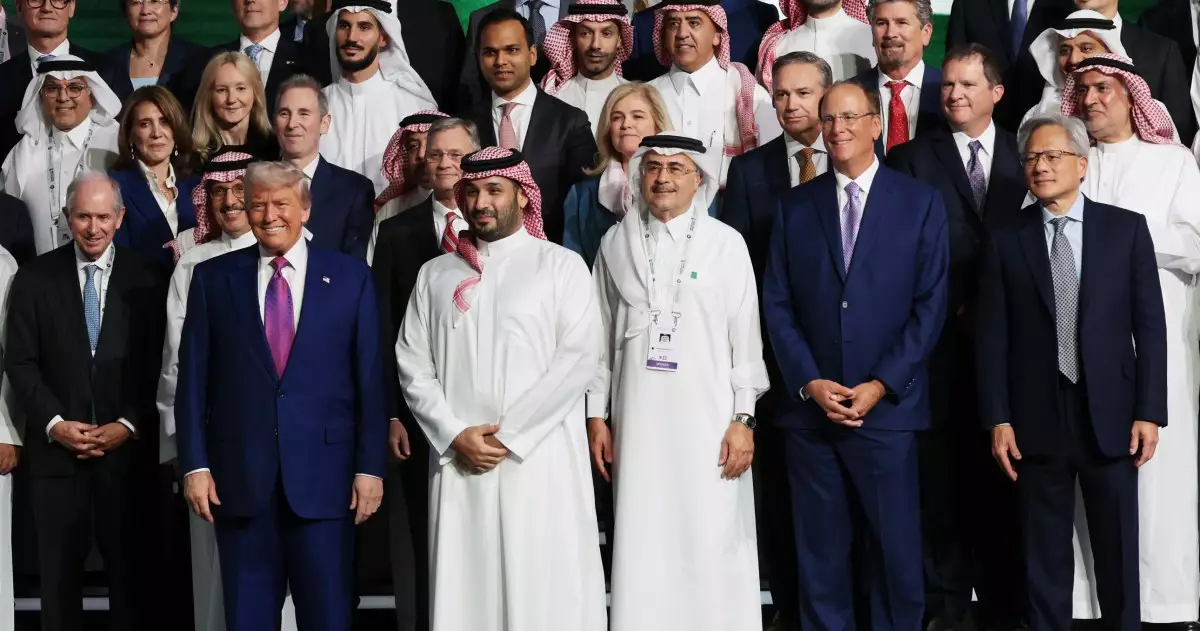Nvidia, a titan in the realm of AI technology, faces a landscape filled with obstacles that seem to have been thoughtfully cleared away. The shifting dynamics surrounding U.S. export controls and international relations have created an environment where Nvidia’s dominance in the AI chip market can thrive unimpeded. In a strategic maneuver, the U.S. has lifted certain export limitations, effectively enabling Nvidia to navigate their competitive landscape with greater ease. This significant policy shift could pave the way for an era where Nvidia fortifies its already robust position, but at what cost to international relations and technological equity?
The recent announcement by the U.S. Department of Commerce (DOC) that it would rescind the Artificial Intelligence Diffusion Rule, designed to curb the export of AI chips, marks a pivotal moment for the company. Previous regulations imposed by the Biden administration had threatened to circumscribe Nvidia’s operations significantly, jeopardizing its vast market share estimated at roughly 90% of the AI chip industry. The regulatory landscape that had favored restrictions now appears to sway toward facilitating Nvidia’s expansion and influence in global markets, a shift undoubtedly welcomed by CEO Jensen Huang and other company stakeholders.
A Calculated Political Engagement
Political engagement has long been a necessary strategy for technology companies aiming to safeguard their interests. Nvidia’s recent outreach to the Trump administration illustrates the company’s tactical acumen in aligned policymaking. Huang’s appearance alongside former President Trump during a recent investment summit in Saudi Arabia underscores a deliberate effort to bolster AI investments in American firms. This strategic partnership can serve as a linchpin for Nvidia, supporting its goals of sustaining its leadership in the AI sector while positioning itself against emerging competitors, including Chinese tech titan Huawei and its domestically developed Ascend AI chipsets.
The DOC’s assertion regarding the misalignment of the Diffusion Rule with American innovation is telling. Their claim that restrictive regulations would hinder U.S. technological progress and tarnish diplomatic relations seems a prime motivator for the expedited withdrawal of the rule. With more favorable export conditions, Nvidia can focus on maximizing opportunities while preserving its leading technological edge. However, the undercurrent of political favoritism raises questions about the ethics behind such endorsements and the implications for global trade relationships.
Emerging Competition and the Quest for Dominance
While Nvidia enjoys a significant lead in the market, the looming presence of Huawei’s Ascend processors cannot be overlooked. These chips represent China’s attempt to break free from reliance on U.S. technology and assert its capabilities in the AI arena. The DOC’s warnings against the use of Huawei technology serve not only as a protective measure for U.S. companies but also as a clear signal of the escalating tensions between two technological superpowers. By understanding that future competitiveness in AI rests not only on the innovation of companies like Nvidia but also on the geopolitical landscape, it becomes evident that Nvidia’s strategies are not solely about business; they also encompass diplomatic narratives.
This intricate dance between innovation and regulation showcases the multifaceted challenges Nvidia and its peers must address. The stifling of alternative suppliers and the consolidation of power within a singular market player could suppress healthy competition. Such an outcome raises important ethical questions regarding market fairness and consumer choice. While Nvidia’s assertiveness in lobbying for favorable conditions is a hallmark of intelligent corporate strategy, the implications of diminished competition could result in a stagnant technological landscape marked by limited diversity and increased prices for consumers.
Implications for the Future of AI Technology
The trajectory that Nvidia embarks upon may soon define the future of the AI industry, shaping how technology evolves and is disseminated globally. With the lifting of export restrictions, Nvidia stands at the brink of universal expansion—yet, it must navigate the intricate threads of international relations and regulation to harness the full potential of its innovations. By aligning effectively with political forces and addressing competitive challenges, Nvidia can affirm its place at the helm of AI technology.
The unfolding narrative emphasizes a critical question: how will Nvidia balance its ambitions with the broader implications of its dominance in the AI domain? For an industry reliant on innovation, an equitable landscape—where multiple players can thrive—is essential to fostering creativity and driving advancements. As Nvidia capitalizes on these strategic advantages, stakeholders and consumers alike should stay vigilant about the potential ramifications of such concentrated power.

